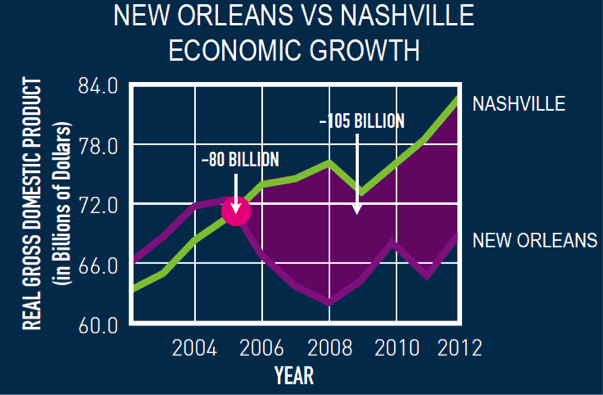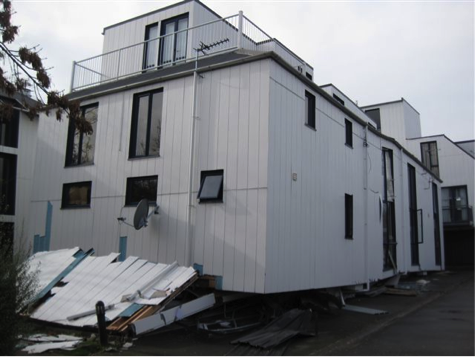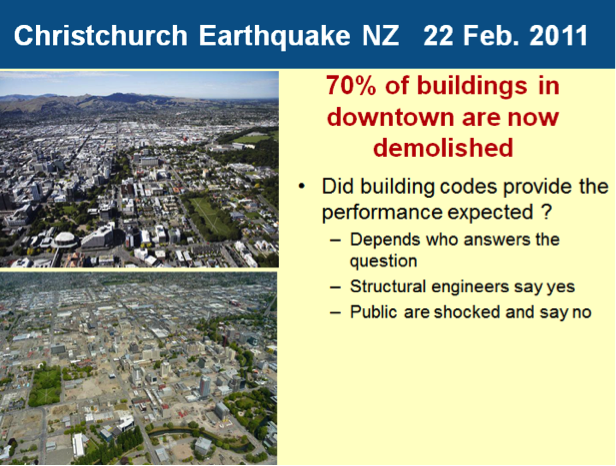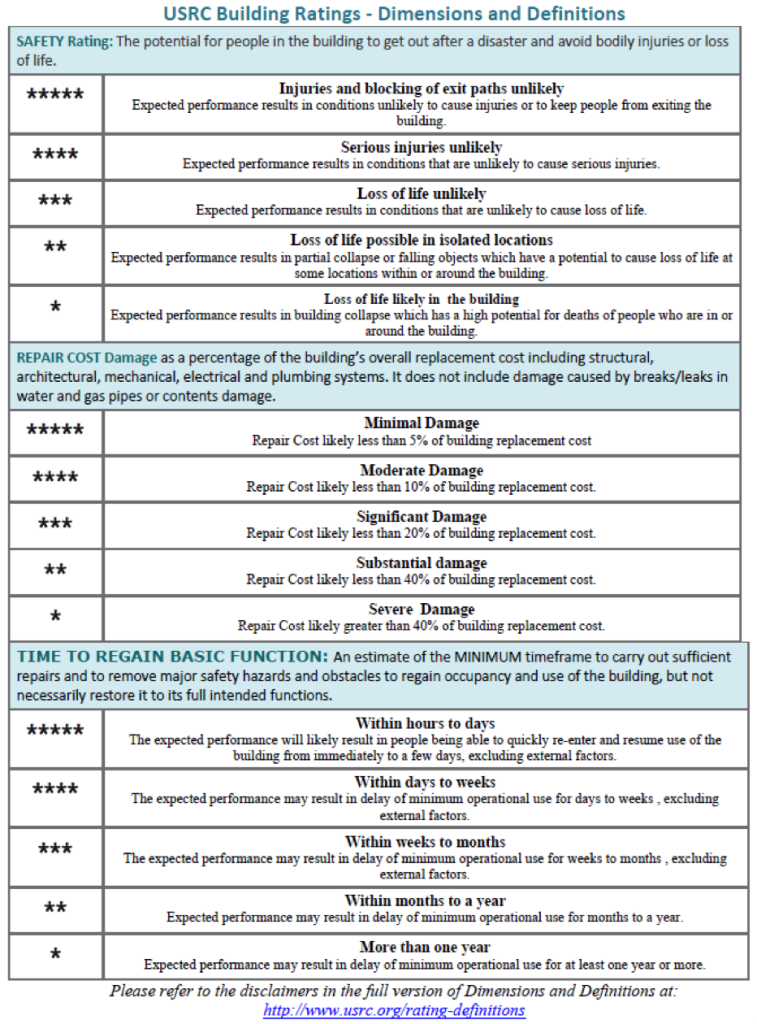The world has seen many increasingly catastrophic natural disasters in the past decade, including Hurricane Katrina (Category 3) striking New Orleans in 2005, 2010’s 7.0 magnitude Haiti and 8.8 magnitude Chili earthquakes, the 9.0 magnitude Japan earthquake along with the Christchurch earthquake (6.3 magnitude) in 2011, the tornado outbreak in 2011 which included an EF4 striking Tuscaloosa, AL and a multiple-vortex EF5 striking Joplin, MO. We also saw Category 2 Hurricane Sandy, the largest Atlantic hurricane on record in 2012 and the EF5 tornado striking Moore, Oklahoma in 2013.
New Orleans was approximately $2 billion ahead of Nashville in real gross domestic product in 2002, but suffered an $80 billion loss due to Hurricane Katrina. With economic factors such as business interruption, business loss and population loss, New Orleans fell significantly behind Nashville by approximately $105 billion in real gross domestic product from 2005 to 2012 as shown in Figure 1.

A June 2014 article in Engineering News-Record noted, “Economists predict it will take some $35 billion and 50 to 100 years for New Zealand to recover from the February 2011 Canterbury earthquake, which killed 185 people and devastated Christchurch, the nation’s third-largest .” (See Figure 2)

In 2008, the USGS forecasted a 99% probability that a 6.7 magnitude or greater earthquake would occur in California. An earthquake scenario was developed for the Southern California ShakeOut explaining the effects of a 7.8 magnitude earthquake on Southern California caused by a rupture of the southern portion of the San Andreas Fault. The scenario was developed by Dr. Lucy Jones of the USGS and a group of more than 300 scientists. It estimated approximately 1,800 deaths, 50,000 injuries and $213 billion of economic losses.
The economic losses included approximately $48 billion due to shaking damage, $65 billion due to fire damage, $96 billion due to business interruption costs and $4 billion due to traffic delays.
With this kind of devastation, building owners, building occupants, builders and designers are looking to better understand the performance expected from buildings built to minimum code requirements, and what the costs are of building to the minimum or above the minimum before and after a disaster.
After an earthquake, survivors often say they thought their building was built to code and wonder why it was so damaged or had to be demolished. Many don’t realize that building to the code minimum in earthquake country means there will be significant damage to the building and that it may need to be razed, as the cost to repair is too high. Christchurch is an example of this (see Figure 3).

Another consideration of the effects of a natural disaster is the interaction with the built environment. While it would seem that each building owner is responsible for the building(s) they own, their buildings’ performance in a natural disaster can adversely affect adjacent buildings, infrastructure and citizens, thereby greatly affecting the performance and recovery of neighbors and the community overall. Additionally, since natural resources are stressed and energy costs are increasing, most communities are making efforts to reduce their use with various sustainability or green initiatives. Buildings represent a significant amount of materials and energy. It’s been said that the most “green” building is the one already built versus one having to be re-built after a significant event.
These issues have led to discussion about the “resiliency” of a community. Webster’s Dictionary defines “resiliency” as “. . .able to become strong, healthy, or successful again after something bad happens” or “. . .able to return to an original shape after being pulled, stretched, pressed, bent, etc.”
There are tools that consumers already use to understand the quality and risk associated with a product or service, such as consumer report ratings for various products from cars to appliances, car crash test ratings and the restaurant grading system. To offer a similar information tool for buildings, a new non-profit organization called the United States Resiliency Council (USRC) was formed. The goal of the USRC is to serve as a credible unbiased tool for local governments, building owners, lenders, insurance providers and occupants by providing information on the quality and risk associated with a building after a natural disaster. Simpson Strong-Tie is a Founding Member of the USRC along with 63 other companies and organizations such as ATC, EERI, NCSEA, SEAOC.
The USRC vision is “. . .a world in which building performance in disasters such as earthquakes, hurricanes, tornadoes, floods and blast are more widely understood” and its mission is “. . .to be the administrative vehicle for implementing rating systems for buildings subject to natural and manmade disasters, and to educate the building industry and the general public about these risks.” Keys to the consistency and credibility of their building rating system includes certifying engineers to perform ratings and requiring a technical audit of the ratings by certified reviewers.
The rating process begins with a building evaluation by a USRC certified engineer using the Tier 1 and 2 check list procedure of ASCE 41-13, “Seismic Evaluation of Existing Buildings,” which describes a three-tiered process for seismic evaluation of existing buildings to either the Life Safety or Immediate Occupancy Performance Level. Alternately, the certified engineer may use FEMA P-58, “Seismic Performance Assessment of Buildings,” which expresses analysis results in terms of deaths, dollars and down time. Then the certified engineer converts the findings from ASCE 41 or FEMA P-58 to a USRC rating. The USRC earthquake hazard rating system describes building performance using three dimensions: Safety, Repair Cost, and Time to Regain Basic Function. Within each dimension, there are five thresholds of performance, each represented by a star as shown in Figure 4.

A three star rating means loss of life is unlikely, the building repair cost will likely be less than 20% and the time to regain basic function will likely be within weeks to months. Typical buildings built to the code minimum would likely receive a three star rating.
As discussed in a previous blog post, Los Angeles Mayor Garcetti formed a Seismic Safety Task Force led by Dr. Lucy Jones which developed the “Resilience by Design” report. The report contains recommended strategies to identify and seismically strengthen vulnerable existing buildings, water infrastructure and communication framework. It included a voluntary earthquake hazard building rating using the USRC system. Los Angeles plans to lead by example by having city-owned buildings rated to better understand the quality and needs of their building stock. Importantly, the report also offered incentive recommendations such as waiving permit fees and a five-year exemption from business tax for those businesses moving into retrofitted buildings to “. . .help ensure the successful implementation of the recommendations.”
The San Francisco Community Action Plan for Seismic Safety (CAPSS) Earthquake Safety Implementation Program (ESIP) listed 50 tasks to be implemented over 30 years including a Mandatory Soft-Story Retrofit Program. This program was signed into law in the spring of 2013 as we have covered in a previous blog post.
Other cities are looking into similar strengthening strategies as L.A. and S.F. Hopefully, individuals, building owners, occupants, financiers, insurance organizations, other organizations and government officials will work together to determine the vulnerabilities in their built environment and develop strategies to address them. This will better ensure that communities not only survive coming natural disasters, but also are able to recover more quickly.
What should be the measures of a resilient community? Which organizations or efforts are working to educate and improve your community resiliency? Let us know in the comments below.


All too often building officials and city politicians are too concerned about the resiliency of the downtown core commercial buildings. But for most of the citizens a greater concern is their ability to remain in their homes following an earthquake or on other natural disaster. Relatively minor damage to a residential building can result in the displacement of many citizens which will in turn affect the ability of emergency response departments to effectively carry out their mission.
Here in Victoria British Columbia, the Hallmark Heritage Society is endeavoring to educate the owners of older homes on how to effectively seismically upgrade their homes so that, in the event of an major earthquake, they may be able to stay on the premises where their are emergency earthquake supplies are stored and where they would not be a burden to the emergency response teams.